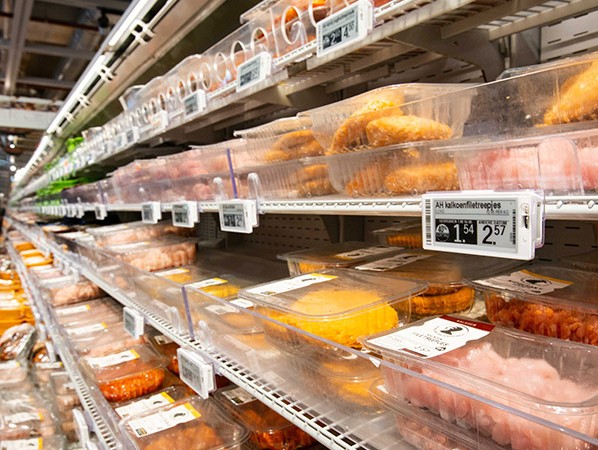
On Monday 20 May, Albert Heijn took a new step in reducing food waste with the 'dynamic price reduction' trial. The products are automatically discounted on the basis of the shelf life: the shorter the shelf life, the higher the discount. An algorithm takes into account various factors that influence the sale of a product in order to calculate the best discount. The trial will take place at the Albert Heijn in Zandvoort with the poultry and fish products. Albert Heijn was advised for this trial by the anti-waste company Wasteless.
Albert Heijn has been praising products that run up to the expiry date for years with the 'throwing away 35% is a sin discount sticker'. This sticker is affixed to products before 10 a.m. and ensures that they are sold at a discount throughout the day. This is a great way to reduce food waste and give customers a discount.
In the case of dynamic discounting, an algorithm developed by Albert Heijn automatically calculates the best discount in order to eliminate unsaleable products at the end of the day and thus reduce food wastage. The algorithm takes into account location, bonus offers, weather conditions, historical sales performance and in-store stock. The products are accompanied by electronic price tags with two prices: the regular price and discount at a specific expiration date.
Wasting food is an important theme in Albert Heijn's sustainability strategy, which he has been committed to for many years. Examples are the collaboration with the food banks, which received four million products in 2018, the detergent in which orange peel is given a second life, and the collaboration with Instock, the restaurant that cooks with saved food. With these and other initiatives, Albert Heijn aims to contribute to half of the food wastage in the entire food chain by 2030. Dynamic discounting is the next step. All information, with more figures and current examples, can be found on www.ah.nl/duurzaam.
Source: © Albert Heijn